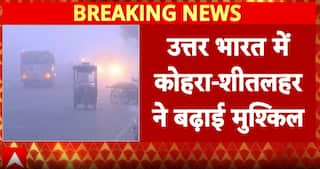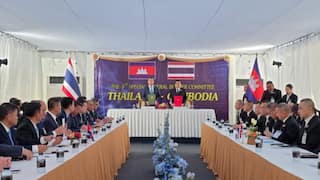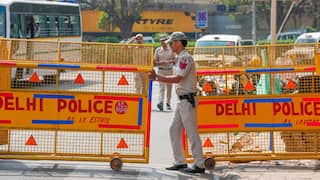Science For Everyone: Why Most Birds Fly In A V-Formation, And How The Physics Works
Science For Everyone: This week, in ABP Live's science column, we discuss why most birds, including geese, fly in V-formation, and how the physics behind it works.

Science For Everyone: Welcome back to "Science For Everyone", ABP Live's weekly science column. Last week, we discussed the science behind lithium-ion batteries, and how 2019 Chemistry Nobel Laureate John Goodenough and other scientists developed the most powerful battery in the world. This week, we discuss why most birds, including geese, fly in V-formation, and how the physics behind it works.
Before we understand flight formations, it is important to know the difference between a flight aggregation and a flight flock.
According to a 1974 study titled 'Avian Flight Formations' conducted by Frank H Heppner and published in the journal Bird-Banding, a flight aggregation is a group of flying birds assembled in a given area that lack coordination in turning, velocity, spacing, flight direction, and time of takeoff or landing. For instance, a group of birds feeding on a school of fish is a flight aggregation.
Meanwhile, a flight flock is one in which a group of flying birds is coordinated in one or more parameters such as turning, spacing, velocity, and flight direction of individual birds, and time of takeoff and landing. A flight flock may differ in terms of degree of organisation. A flight flock is also known as a flight formation. Extrinsic factors can determine coordination among birds.
Line formations and V-formations are some examples of flight flocks.
Why most birds fly in V-formation
The V-formation flight adopted by birds is considered an energy-saving adaptation. Birds may save up to 71 per cent of induced power if they fly in an appropriate position in formation, according to a 1970 study published in the journal Science, and conducted by P.B.S. Lissaman and C.A. Schollenberger. The power required to maintain enough lift to overcome the force of gravity is known as induced power. Lift is the mechanical aerodynamic force produced by the motion of the bird through the air.
Scientists test the amount of energy saved by birds flying in formation using a measurement called wing tip spacing, which refers to the distance between wing tips of adjacent birds perpendicular to the flight path. Wing tip spacing measures the placement of wings within a vortex field generated by other wings, or a field generated by rotating wind due to the flapping of other bird wings. The precision of wing placement in regions of the vortex field producing maximum lift determines the amount of energy saved, according to a 1987 study published in the Journal of Experimental Biology. When there is precise optimum positioning, about 71 per cent of induced power is saved. This predicted maximum was calculated by assuming that birds were flying in an 'infinite' formation, and their spacing was at the optimum.
The vortex field is produced for a particular bird due to the flapping of wings of the bird ahead.
For a formation of nine birds, a maximum of 51 per cent saving is predicted, according to the study by Lissaman and Schollenberger, and a 1981 study by JP Badgerow and FR Hainsworth, published in the Journal of Theoretical Biology.
Wing tip spacing varies among different birds. Some birds maintain wing tip spacing close to the optimum positioning in order to save energy, while others maintain wing tip spacing with excessive gaps.
The depth, or the distance along the flight path between birds, also determines the amount of energy saved. Birds at large depths and at the apex achieve low energy savings, but periodic changes in flight direction in response to variations in the position of the bird ahead can enhance energy savings. Therefore, birds flying in V-formation keep changing their positions, and take turns as the leader of the flock in order to ensure that they stop at fewer places to rest, and save more energy.
According to the 1987 study published in the Journal of Experimental Biology, windy conditions during flight may make precision flight more difficult by inducing additional unpredictable position moves.
The study said that 'leaders', which included birds at the apex of Vs and individuals positioned at relatively large depths from the bird ahead, obtained relatively low savings.
The wing position of the bird ahead, and the depth between the bird ahead and trailing birds can determine the position of the wings of trailing birds.
The 1970 study said that birds flying in formation have a greater advantage over a lone bird because in the former, there is a tailwind. A V-formation helps equally distribute air drag saving.
Flying in a V-formation also allows the birds to keep track of each other, allowing easier communication and coordination.
Therefore, energy conservation and enhanced coordination are the main reasons why birds mostly fly in a V-formation.
Similar is the case with fighter planes. These aircraft fly in V-formation to save energy, ensure coordinated movement, and make the identification of potential threats simpler.
Why waterfowl swim in formation
Ducklings are examples of birds which swim in formation. The 2022 Ig Nobel Prize in Physics was jointly awarded to two groups of scientists for trying to understand how ducklings manage to swim in formation.
One of the studies was published in the book Mechanics and Physiology of Animal Swimming, and the other was published in the Journal of Fluid Mechanics.
According to the latter study, ducklings follow their mothers in a highly organised formation when swimming over open waters. Some of the questions that arise include why the ducklings are swimming in formation, and what the best swimming formation is.
The researchers observed two new and interesting findings in waterfowl: wave-passing and wave-riding. The generation of waves by the mother duck is called wave-passing, and the trailing duckling riding these waves is called wave-passing.
When a duckling swims at a 'sweet point' behind its mother, a destructive wave interference phenomenon occurs. When two waves overlap each other in such a way that they cancel each other out, the phenomenon is called destructive wave interference.
The destructive wave interference phenomenon turns the wave drag (a force that retards the movement of an object) of the duckling positive, pushing the trailing bird forward.
The rest of the ducklings can also sustain the wave-riding benefit in a single-file formation. Thus, wave-riding and wave-passing are probably the principal reasons behind the evolution of swimming formation by waterfowl.
The study was the first to reveal the reasons why the formation movement of waterfowl can preserve individuals' energy expenditure.







































